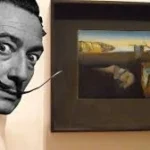
Welcome to our exploration of the fascinating world of Antoni Gaudí, one of history’s most innovative and celebrated architects. Known for his distinctive style that harmoniously blends nature and architecture, Gaudí’s creations are not just buildings; they are masterpieces that tell stories of creativity, passion, and cultural significance. In this blog, we will delve into 25 interesting facts about Antoni Gaudí, uncovering the details of his life, his revolutionary design principles, and the iconic works that have left an indelible mark on the architectural landscape of Barcelona and beyond. Whether you’re an architecture enthusiast, a history buff, or simply curious about this remarkable figure, join us on this journey to discover the genius behind the structures that continue to inspire and captivate people around the world.
1852: Antoni Gaudí was born on June 25, 1852, in Reus, a town in Catalonia, Spain. He was the son of a coppersmith, which likely influenced his appreciation for craftsmanship and materials from a young age. Growing up in Catalonia, a region rich in culture and artistic traditions, Gaudí was exposed to various architectural styles and artistic movements that would later inform his unique approach to design.
1926: Gaudí passed away on June 10, 1926, after being struck by a tram in Barcelona. His death marked the end of an era for Catalan Modernism. At the time of his death, he was largely unrecognized by the broader architectural community, but his work would later be celebrated for its innovative forms and integration with nature. His tragic end came just a few years before the completion of his most famous work, the Sagrada Família.
73: Gaudí was 73 years old at the time of his death. His life was dedicated to architecture, and he spent the latter part of it almost exclusively focused on the Sagrada Família, which he considered his life’s work. Despite the many challenges he faced, including funding issues and changing architectural trends, Gaudí’s commitment to his vision never wavered.
1878: In 1878, Gaudí graduated from the Barcelona Provincial School of Architecture. His education provided him with a solid foundation in traditional architectural principles, but it was his innovative thinking and naturalistic approach that set him apart. His early exposure to the Gothic and Moorish styles would later influence his distinctive architectural language, characterized by organic forms and intricate details.
1882: Construction on the Sagrada Família basilica began in 1882, although Gaudí was not the original architect. The project started under Francisco de Paula del Villar, who designed a traditional Gothic-style church. However, after Gaudí took over as chief architect a year later, he radically transformed the design, infusing it with his unique vision that combined Gothic and Art Nouveau styles.
1883: In 1883, Gaudí became the chief architect of the Sagrada Família, and he dramatically altered the initial plans. He envisioned a grand basilica that would serve as a testament to his faith and artistic vision. Gaudí’s design incorporated complex geometries and natural motifs, intending to create a structure that felt alive and reflective of the divine.
43: Gaudí dedicated 43 years of his life to the Sagrada Família, from 1883 until his death in 1926. His relentless pursuit of perfection and his innovative techniques meant that the project evolved continuously. Even after his death, construction continued based on his detailed models and plans, reflecting his lasting influence on the project.
3: The Sagrada Família was designed to have three grand façades: the Nativity, Passion, and Glory. Each façade represents a different aspect of Christ’s life. The Nativity façade, completed during Gaudí’s lifetime, is richly decorated with scenes of flora and fauna, symbolizing the joy of birth. The Passion façade, stark and dramatic, depicts the suffering of Christ, while the Glory façade, still under construction, will represent the resurrection and the path to God.
18: Gaudí envisioned a total of 18 towers for the Sagrada Família, each holding symbolic significance. Twelve towers represent the Apostles, four are dedicated to the Evangelists, one to the Virgin Mary, and the tallest, at 172.5 meters (566 feet), is dedicated to Jesus Christ. This height was intentionally designed to be slightly shorter than Montjuïc hill, symbolizing the humility of Christ in relation to nature.
172.5 meters (566 feet): The central Tower of Jesus Christ is planned to reach a height of 172.5 meters (566 feet). This ambitious height reflects Gaudí’s desire to create a structure that would be a monumental representation of faith and spirituality, dominating the skyline of Barcelona. The tower’s design incorporates elements of light and space, intended to draw visitors’ eyes upward, inspiring awe and reverence.
8: Before Gaudí’s death, eight towers of the Sagrada Família were completed, although only one, on the Nativity façade, was fully finished. The other towers were in various stages of construction. As of early 2024, 12 towers have been largely completed, illustrating the ongoing dedication to realizing Gaudí’s vision, which continues to evolve with modern construction techniques.
2010: On November 7, 2010, Pope Benedict XVI consecrated the Sagrada Família and proclaimed it a minor basilica. This event marked a significant recognition of Gaudí’s work, elevating its status within the Catholic Church. The consecration also highlighted the basilica’s importance as a place of worship and pilgrimage, drawing millions of visitors each year who come to admire its architectural beauty and spiritual significance.
1900-1914: The primary years of design and construction for Park Güell occurred between 1900 and 1914. Initially conceived as a luxury housing development for the bourgeoisie, the project evolved into a public park characterized by Gaudí’s imaginative use of color and organic forms. The park showcases his ability to blend architecture with nature, using local materials and incorporating elements like pathways, benches, and structures that mimic natural shapes, creating a whimsical atmosphere.
60: Originally, Gaudí planned for Park Güell to consist of 60 triangular plots intended for luxury homes. However, the project did not attract the wealthy buyers Gaudí envisioned. Only two houses were built, along with Gaudí’s own residence, which served as a show home. Despite its initial commercial failure, Park Güell has become one of Barcelona’s most beloved public spaces, celebrated for its artistic and architectural innovation.
2: Only two houses were constructed in the Park Güell development, excluding Gaudí’s own house. These houses, designed in the same distinctive style as the rest of the park, reflect Gaudí’s commitment to integrating architecture with the surrounding landscape. Gaudí’s residence, now a museum, offers insights into his life and work, showcasing his unique design sensibilities and personal artifacts.
17.18 hectares (approx. 42 acres): Park Güell covers an area of 17.18 hectares (approximately 42 acres), making it one of the largest urban parks in Barcelona. The vast space allows for a variety of landscapes, including gardens, walking paths, and architectural features that invite exploration. Gaudí’s vision for the park was to create a harmonious environment that encourages interaction with nature, art, and community.
110 meters (360 feet): The famous serpentine bench in Park Güell’s main plaza stretches 110 meters (360 feet) and is adorned with colorful ‘trencadís’ mosaic, a technique involving broken ceramic tiles. This bench not only serves as a functional seating area but also as a stunning example of Gaudí’s artistic style, blending form and function. The bench’s fluid shape harmonizes with the surrounding landscape, inviting visitors to sit and enjoy the views of the park and the city.
1904-1906: Between 1904 and 1906, Gaudí undertook the radical remodeling of Casa Batlló, transforming the existing structure into a masterpiece of modernist architecture. The renovation involved reshaping the façade with organic forms, vibrant colors, and intricate tile work, making the building a standout feature on Passeig de Gràcia. Casa Batlló is renowned for its skeletal-like balconies and flowing lines, which symbolize the natural world and reflect Gaudí’s innovative approach to design.
6: Casa Batlló consists of six main floors, including the ground floor, the noble floor, and four upper floors, along with a loft/attic and basement. Each level showcases Gaudí’s attention to detail and his ability to create functional spaces that are also visually striking. The interior features custom-designed furniture and decorative elements that further enhance the building’s unique character, making it a prime example of Gaudí’s holistic design philosophy.
1906-1912: The construction of Casa Milà, popularly known as “La Pedrera” (The Stone Quarry), took place between 1906 and 1912. This building is celebrated for its undulating stone façade and innovative use of ironwork. Casa Milà was one of Gaudí’s last civil works and represents a culmination of his architectural ideas, including a focus on natural forms and the integration of light and space. The rooftop terrace, with its sculptural chimneys, has become an iconic feature of the building.
28: Casa Milà features 28 unique, sculpted chimneys arranged like surreal sculptures on its rooftop terrace. These chimneys not only serve a practical purpose but also contribute to the building’s whimsical and organic aesthetic. The rooftop is accessible to visitors, who can enjoy panoramic views of Barcelona while appreciating Gaudí’s imaginative designs that blur the lines between art and architecture.
33: The façade of Casa Milà is adorned with 33 wrought-iron balconies, each uniquely designed and crafted. These balconies showcase Gaudí’s mastery of materials and craftsmanship, featuring intricate patterns that contrast with the building’s stone exterior. The balconies contribute to the overall fluidity of the design, enhancing the sense of movement and rhythm that characterizes Casa Milà.
1883-1885: Casa Vicens
Casa Vicens is a significant milestone in Antoni Gaudí’s career, marking his first important commissioned building. Located in the Gràcia district of Barcelona, this residence was commissioned by a local industrialist, Manuel Vicens i Montaner. The construction began in 1883 and was completed in 1885. Casa Vicens showcases Gaudí’s early style, which blends Gothic and Moorish influences, evident in its vibrant ceramic tiles and elaborate wrought ironwork. The building’s colorful façade and intricate details reflect Gaudí’s innovative approach to architecture, which would evolve throughout his career. Casa Vicens is now a museum, allowing visitors to explore the unique design elements that characterize Gaudí’s work.
7: UNESCO World Heritage Sites
Antoni Gaudí’s genius is recognized globally, with seven distinct properties designed by him collectively listed as a UNESCO World Heritage site under the designation “Works of Antoni Gaudí.” This prestigious recognition highlights the architectural significance and cultural value of his creations, which include iconic structures such as the Sagrada Família, Park Güell, and Casa Batlló. Each site exemplifies Gaudí’s unique style, characterized by organic forms, vibrant colors, and intricate details that harmonize with nature. The UNESCO designation not only preserves these architectural masterpieces but also promotes awareness of Gaudí’s contribution to modern architecture and his innovative use of materials and techniques.
1984: UNESCO Inscription
In 1984, the first three works of Antoni Gaudí—Park Güell, Palau Güell, and Casa Milà—were inscribed on the UNESCO World Heritage List, marking a significant recognition of his impact on architecture. This initial listing celebrated Gaudí’s ability to blend artistic vision with structural innovation, as seen in the whimsical designs of Park Güell, the opulent interiors of Palau Güell, and the undulating façade of Casa Milà. The UNESCO designation was later expanded in 2005 to include additional works, further solidifying Gaudí’s legacy as a pioneer of modernist architecture. The recognition by UNESCO not only honors Gaudí’s artistic achievements but also emphasizes the importance of preserving such cultural treasures for future generations.
Frequently Asked Questions about Antoni Gaudi:
1. Who was Antoni Gaudí?
Antoni Gaudí was a Catalan architect born on June 25, 1852, in Reus, Spain. He is best known for his unique and highly individualistic style, which is characterized by organic shapes, vibrant colors, and intricate details inspired by nature. Gaudí’s work is primarily associated with the Modernisme movement in Catalonia, and he played a crucial role in shaping the architectural landscape of Barcelona. His most famous work, the Sagrada Família, remains unfinished and continues to attract millions of visitors each year.
2. What are some of Gaudí’s most famous works?
Some of Antoni Gaudí’s most renowned works include:
- Sagrada Família: A monumental basilica that has been under construction since 1882 and is known for its intricate facades and towering spires.
- Park Güell: A public park filled with colorful mosaics, whimsical structures, and panoramic views of Barcelona.
- Casa Batlló: A modernist building famous for its organic shapes, vibrant colors, and unique façade resembling a dragon.
- Casa Milà (La Pedrera): An innovative residential building with a wavy stone façade and a rooftop adorned with sculptural chimneys.
- Palau Güell: A mansion designed for industrialist Eusebi Güell, showcasing Gaudí’s early work and intricate ironwork.
3. What architectural style did Gaudí use?
Gaudí’s architectural style is often categorized as Catalan Modernisme, which is characterized by a blend of Gothic and Art Nouveau influences. His work features organic forms, vibrant colors, and intricate details that mimic natural elements. Gaudí often employed innovative construction techniques, such as using catenary arches and hyperboloid structures, which allowed him to create unique and functional designs. His emphasis on harmony with nature and the use of natural light are also hallmarks of his style.
4. Why is the Sagrada Família significant?
The Sagrada Família is significant for several reasons:
- Cultural Importance: It is a symbol of Barcelona and a UNESCO World Heritage site, representing the pinnacle of Gaudí’s architectural vision.
- Innovative Design: The basilica features a combination of Gothic and Art Nouveau styles, with unique structural elements that challenge traditional architectural norms.
- Ongoing Construction: Despite being under construction since 1882, the Sagrada Família continues to be a work in progress, with completion aimed for 2026, marking the centenary of Gaudí’s death.
- Spiritual Significance: The basilica is intended to be a place of worship, with design elements that reflect Christian themes and narratives.
5. What materials did Gaudí use in his buildings?
Gaudí utilized a wide range of materials in his constructions, including:
- Stone: He often used local stone to ensure that his buildings blended seamlessly with their surroundings.
- Ceramics: Gaudí incorporated colorful ceramic tiles (trencadís) into his designs, creating vibrant mosaics that add texture and depth.
- Iron: He employed wrought iron for decorative elements and structural supports, showcasing intricate designs.
- Glass: Gaudí used stained glass to enhance natural light within his buildings, creating a play of color and shadow. His innovative use of materials contributed to the uniqueness and visual appeal of his work.
6. Did Gaudí have any formal education in architecture?
Yes, Antoni Gaudí studied architecture at the Escola Tècnica Superior d’Arquitectura in Barcelona, where he graduated in 1878. His education provided him with a foundation in traditional architectural principles, but he quickly developed his own distinctive style that set him apart from his contemporaries. Gaudí’s innovative approach often defied conventional architectural norms, leading him to create structures that were both functional and artistic.
7. What influence did nature have on Gaudí’s designs?
Nature was a profound source of inspiration for Antoni Gaudí. He believed that architecture should reflect the natural world, and he often incorporated organic shapes, colors, and patterns into his designs. Gaudí studied natural forms, such as plants, animals, and geological structures, using them as models for his architectural elements. This connection to nature is evident in the flowing lines of his buildings, the use of natural light, and the integration of green spaces, such as in Park Güell.
8. What is the significance of Park Güell?
Park Güell is significant as a public park that showcases Gaudí’s architectural ingenuity and artistic vision. Originally intended as a residential development, it was transformed into a public space filled with colorful mosaics, and whimsical structures that reflect Gaudí’s unique style. The park features winding pathways, vibrant ceramic tile work, and iconic elements such as the serpentine bench and the colorful dragon fountain. Designed between 1900 and 1914, Park Güell is recognized as a UNESCO World Heritage site and is celebrated for its harmonious integration of architecture and nature. It offers visitors stunning views of Barcelona and serves as a testament to Gaudí’s ability to create spaces that encourage interaction with the surrounding environment.
9. How did Gaudí’s personal beliefs influence his work?
Antoni Gaudí was deeply influenced by his Catholic faith, which played a significant role in shaping his architectural philosophy and design choices. His spiritual beliefs are particularly evident in the Sagrada Família, where every aspect of the basilica is imbued with religious symbolism and meaning. Gaudí viewed his work as a form of worship, believing that architecture should inspire awe and reflect the divine. This spiritual approach also led him to incorporate natural elements into his designs, as he saw nature as a manifestation of God’s creation.
10. What challenges did Gaudí face during his career?
Throughout his career, Gaudí faced several challenges, including:
- Financial Difficulties: Many of his projects relied on private funding, which could be unstable. The Sagrada Família, in particular, faced financial constraints that slowed its construction.
- Public Criticism: Gaudí’s unconventional designs were often met with skepticism and criticism from traditional architects and the public, who were not accustomed to his unique style.
- World Events: The Spanish Civil War and subsequent political turmoil disrupted his work and led to the destruction of some of his designs and models. Despite these challenges, Gaudí remained committed to his vision and continued to innovate until his untimely death in 1926.
11. When did Antoni Gaudí die, and what was his legacy?
Antoni Gaudí died on June 10, 1926, after being struck by a tram in Barcelona. His legacy is profound, as he is regarded as one of the most influential architects of the 20th century. Gaudí’s work continues to inspire architects, artists, and designers around the world, and his unique approach to form, color, and structure has left an indelible mark on modern architecture. The Sagrada Família, still under construction, symbolizes his lasting impact and the ongoing relevance of his artistic vision.
12. Are there any museums dedicated to Gaudí?
Yes, there are several museums dedicated to Antoni Gaudí and his work. The most notable is the Gaudí Museum located in the Casa Batlló, where visitors can learn about his life, creative process, and architectural innovations. Additionally, the Gaudí House Museum in Park Güell showcases personal artifacts and provides insights into his life and inspirations. These museums offer a deeper understanding of Gaudí’s artistic journey and the cultural context in which he worked.
13. How can I visit Gaudí’s works?
Visiting Gaudí’s works is a popular activity for tourists in Barcelona. Many of his sites, such as the Sagrada Família, Park Güell, and Casa Batlló, require tickets for entry, and it is advisable to book in advance, especially during peak tourist seasons. Guided tours are also available for a more in-depth experience. Public transportation, including buses and the metro, makes it easy to access these iconic sites throughout the city. Exploring Gaudí’s works provides a unique opportunity to appreciate his architectural genius firsthand.
14. What are the key characteristics of Gaudí’s architecture?
The key characteristics of Gaudí’s architecture include:
- Organic Forms: Gaudí often used flowing lines and shapes that mimic natural elements, creating structures that appear to grow organically from their surroundings.
- Colorful Mosaics: His use of trencadís, or broken ceramic tiles, adds vibrant color and texture to his buildings, making them visually striking.
- Innovative Structures: Gaudí employed unique construction techniques, including catenary arches and hyperboloid shapes, which allowed for greater structural integrity and aesthetic appeal.
- Symbolism: Many of his designs incorporate symbolic elements, particularly in religious contexts, reflecting his deep spiritual beliefs.
- Integration with Nature: Gaudí’s work often features natural materials and designs that harmonize with the environment, blurring the lines between architecture and nature.









